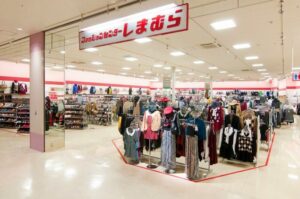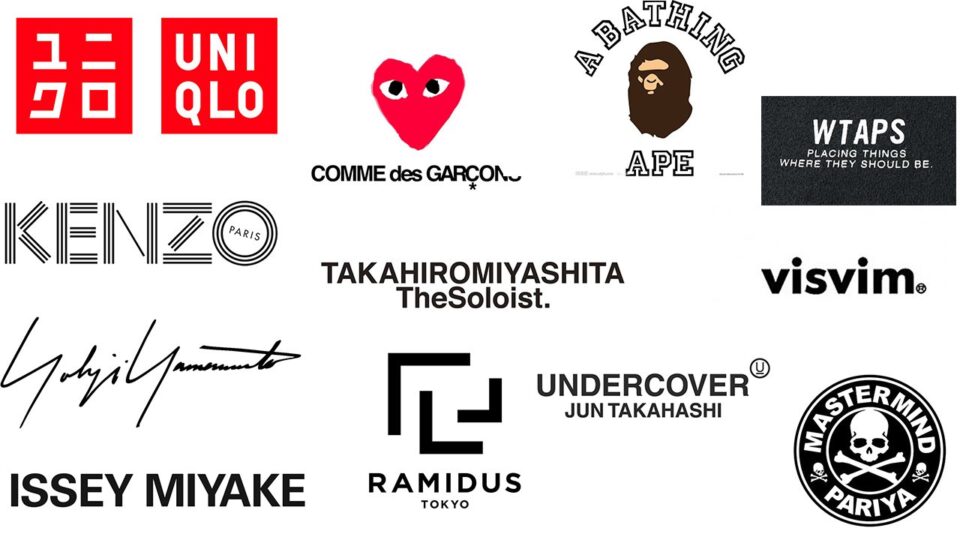
The Japanese apparel market, one of the largest and most dynamic in the world, offers a fascinating blend of traditional clothing and cutting-edge fashion trends. With a market size of ¥9,640 billion in 2020, the industry is on a path to recovery post-pandemic, driven by inflation and a forecast CAGR of less than 1% from 2019-2025. The COVID-19 pandemic has accelerated changes in consumer behavior, fostering a shift towards comfortable, multi-purpose clothing suitable for both work-from-home and hybrid work environments. This trend has notably boosted sales in casual wear and sportswear, with athleisure and technical sportswear seeing particular popularity.
Key Distribution Channels
The Japanese apparel market’s key distribution channels reflect its adaptability and consumer preferences. Supermarkets and hypermarkets are favored for their convenience and value, appealing to economically conscious consumers. The pandemic spurred a rapid shift to online shopping, but physical stores remain significant. Social media has also emerged as a crucial channel, with consumers spending more time online.
The main distribution channels include:
- Hypermarket/Supermarket
- Brand’s Own Store
- Online – Retailer’s Website
- Online – Direct from Brand
- Department Stores
- Other Retailers
- Online – Social Media Website
- Online – Regular Subscription
- Open Markets
- Annual turnover of the apparel and clothing industry: 96 billion dollars
- Annual turnover of womenswear: 58 billion dollars
- Annual turnover of menswear: 28 billion dollars
- Annual turnover of childrenswear: 10 billion dollars

Major Brands
Several brands dominate the Japanese apparel market, each with unique strengths and market strategies:
- UNIQLO: Known for its casual, practical basics, UNIQLO saw a 1.1ppt market share increase in 2020. Innovations and robust online capabilities have positioned it as a market leader.
- Nike: With a strong sportswear range and direct-to-consumer strategies, Nike continues to appeal to trend-conscious consumers, achieving a global revenue growth of over 9% in Q2 FY2021/22.
- Alpen: Focused on technical sportswear, Alpen benefits from growing interest in outdoor activities and experience-based retail.
- Nishimatsuya: Specializing in childrenswear and maternity wear, Nishimatsuya has maintained sales by addressing essential needs.
- GU: Capitalizing on casual wear trends, GU increased its market share by 0.1ppt in 2020.
Market Trends and Consumer Behaviour

The pandemic has influenced Japanese consumers’ shopping habits, leading to a preference for versatile, comfortable clothing. This shift has bolstered the demand for casual wear and sportswear, with athleisure items like leggings and trainers outperforming other categories. Additionally, there is a growing interest in high-quality, multi-functional apparel that aligns with both traditional craftsmanship and modern fashion sensibilities.
Market Projections
By 2024, the Japanese apparel market’s revenue is projected to reach ¥US$89.90bn, growing annually by 2.03% (CAGR 2024-2028). Women’s apparel remains the largest segment, with a market volume of ¥US$49.95bn. Despite challenges, the market is expected to expand, driven by innovations and evolving consumer preferences.
E-Commerce and Technological Integration
E-commerce has become a significant growth driver in the Japanese apparel market. Platforms like ZOZOTOWN, with its innovative ZOZOSUIT technology, have revolutionized online shopping experiences. UNIQLO’s successful online sales strategies, including targeted digital advertising and app-based promotions, exemplify how traditional retailers are leveraging technology to enhance their reach and customer engagement.
The Intersection of Tradition and Modernity
Japanese fashion is renowned for its unique blend of traditional and contemporary elements. While Western fashion influences are prominent, traditional garments like kimonos continue to play a vital role in the cultural fabric. The kimono market, valued at 224 billion yen in 2023, remains robust, influencing modern apparel designs and underscoring the enduring appeal of traditional craftsmanship.
Sustainability and Future Outlook
As the Japanese apparel market evolves, sustainability is becoming increasingly important. Consumers are seeking high-quality, durable products, driving demand for premium, eco-friendly fashion. This shift presents opportunities for both domestic and international brands to innovate and meet the growing demand for sustainable apparel.
In summary, the Japanese apparel market is a vibrant and evolving landscape where tradition and innovation coexist. With a strong emphasis on quality, versatility, and sustainability, the market is poised for continued growth and transformation, setting trends that resonate globally.
IMPORTANT FACTS:
- In 2024, the revenue in the Apparel market in Japan amounts to ¥US$89.90bn.
- It is projected to grow annually by 2.03%, representing a compound annual growth rate (CAGR) for the period 2024-2028.
- The largest segment in the market is Women’s Apparel, with a market volume of ¥US$49.95bn in 2024.
- In comparison to other countries, in the United States generates the highest revenue in the Apparel market, reaching ¥US$359bn in 2024.
- When considering the total population, the per person revenue in Japan amounts to ¥US$733.10 in 2024.
- Looking ahead, the volume in the Apparel market is expected to reach ¥4.1bn pieces by 2028.
- However, in 2025, a slight volume decline of -2.6% is anticipated.
- The average volume per person in the Apparel market is projected to be ¥37.8pieces in 2024.
- By 2024, non-luxury goods are expected to account for 93% of sales in the Apparel market.
- The trend in the Japanese apparel market is a strong emphasis on traditional craftsmanship and high-quality materials.
Economic Significance
Japan, the third-largest economy in the world, boasts a high purchasing power and a growing demand for fashion and garments. The country’s apparel market combines traditional textiles with modern fashion, creating a unique blend that appeals to both domestic and international consumers. This dynamic market has proven resilient, bouncing back quickly from setbacks like the 2011 earthquake.
Market Trends and Categories
The Japanese apparel market features several prominent categories:
- Women’s Outerwear: A leading segment driven by a blend of traditional and modern styles.
- Sportswear: Increasingly popular due to a growing interest in health and fitness.
- Children’s Wear: Steady demand, especially for high-quality and functional garments.
Recent innovations in functional garments, which combine fashion with utility, have seen a rise in sales and unit prices. Japanese consumers are shifting from regular economy clothing to premium, high-quality apparel, leading to increased demand for luxury items.
Street Fashion and Global Influence
Japanese street fashion, particularly in areas like Harajuku and Shibuya, has gained global attention for its unique and bold styles. Key trends include:
- Lolita Fashion: Feminine and cute with lacy frocks and accessories.
- Gothic and Punk Styles: Popular among young fashion enthusiasts.
- Kogal Style: Inspired by high school uniforms, characterized by checked skirts and loose socks.
- Fairy Kei and Dolly Kei: Vibrant, pop-color styles influenced by toys and fantasy elements.
These trends reflect a fusion of traditional Japanese aesthetics and Western influences, creating a distinctive fashion identity.
Major Brands and Designers
Leading Brands
- UNIQLO (Fast Retailing): The largest fast fashion retailer in Japan, expanding globally.
- A Bathing Ape: Collaborations with hip-hop stars like Nigo and Pharrell Williams.
- Samantha Thavasa: Uses international celebrities for marketing.
- ZOZOTOWN: Japan’s largest online fashion store with innovative tech solutions.
Renowned Designers
- Yohji Yamamoto
- Issey Miyake
- Rei Kawakubo (Comme des Garcons)
- Motonari Ono
- Kazuhiro Takakura
These designers have made significant contributions to both Japanese and global fashion scenes, showcasing their collections at major fashion weeks.
E-commerce Dominance
E-commerce is the preferred shopping channel for Japanese consumers, driven by high growth in online retailing. Major platforms include:
- ZOZOTOWN
- Jupiter Shop Channel
- La Boo
- Start Today
Consumers in Japan pursue high-quality, durable products, leading to a growing market for luxury clothing, including unused luxury items. Companies like The RealReal have entered this space, offering curated high-end products and building trust through “white glove services.”
Market Challenges and Opportunities
Challenges
- Rising Labor and Raw Material Costs: Increasing production costs affect final garment prices.
- Consumption Tax Increases: The rise to 8% in 2014, with another hike planned, has impacted sales.
Opportunities
- Unmet Demand and Unexplored Markets: Significant potential for growth and investment.
- Technological Innovations: Brands like UNIQLO and Toray are developing high-tech garments to maintain consumer interest and stabilize prices.
Retail Sales and Segment Dominance
In 2022, the retail sales value of the Japanese apparel industry was around 8.1 trillion yen. Women’s fashion dominated, making up about half of retail sales. Fast Retailing was the leading fashion company with sales exceeding 2.3 trillion yen, primarily through its UNIQLO brand. The ceramics and electronics manufacturer Kyocera also plays a significant role in the market with its jewelry and accessories segment.

